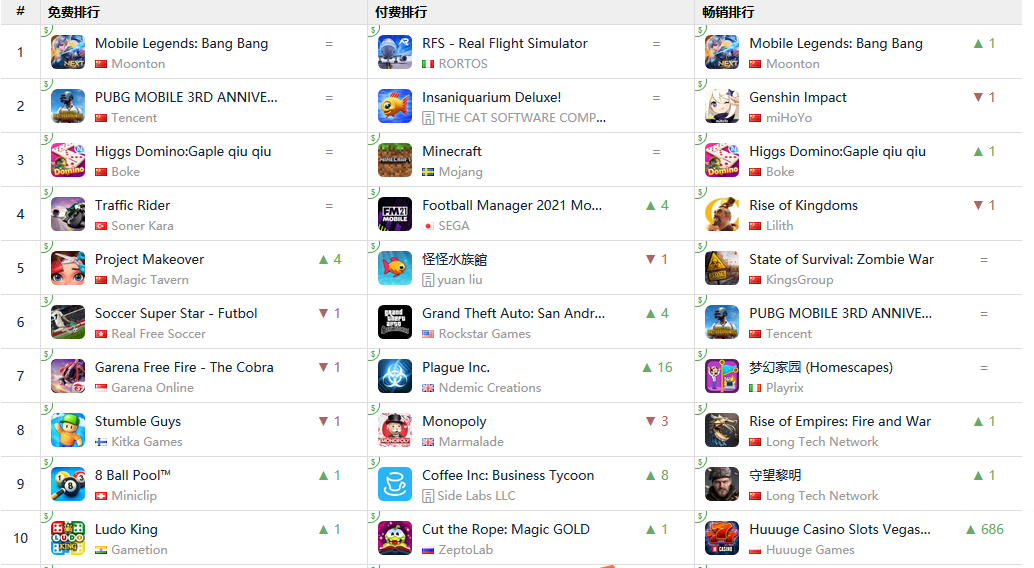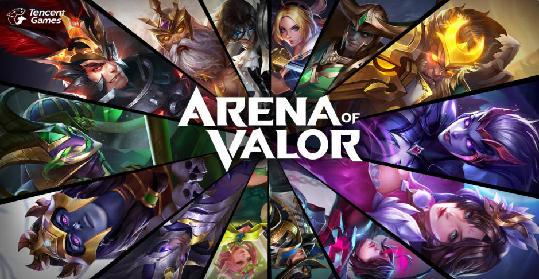“You’re happy, my business”
Editor’s note: This article is from the micro-channel public number “Rays Society” (ID: Globalinsights), Author: Garcia.
Taman Anggrek Mall, this is the largest shopping mall in Jakarta, the capital of Indonesia, and one of the city’s landmarks.
On September 1, 2017, bursts of cheers came from this mall with a huge flow of people-on this day, the e-sports competition “Mobile Legends: Bang Bang (” Chinese name: Endless Showdown) Southeast Asia Cup” officially opened.
The competition venue is located in the center of the shopping mall’s lobby. In order to witness this event with their own eyes, at least tens of thousands of gamers come from all over Indonesia to gather here every day. The seemingly non-regular competition venue did not affect everyone’s enthusiasm: the temporary spectator area was full of seats, and even the railings on each floor of the mall were crowded with spectators.
Behind this lively scene is the extraordinary influence of “Endless Showdown” in Indonesia and even Southeast Asia: 67% of the 400 million downloads of the game worldwide are from Southeast Asia; in Singapore, Indonesia, Malaysia, the Philippines, and Brunei, close to A quarter of the total population is its registered users.
The popularity of “Endless Showdown” is just a microcosm of the popularity of Chinese mobile games in Southeast Asia.
For a long time, Southeast Asia has been one of the popular destinations for Chinese gamers to go overseas. The large population base and extremely high proportion of young people have created market growth potential: In Q1 of 2020, mobile game downloads in Southeast Asia soared to 1.82 billion times, surpassing India to become the world’s most downloaded market.
Chinese players with a keen sense of smell have naturally seen opportunities for gold nuggets in Southeast Asia early. From giants represented by Tencent to new forces such as Mutong Technology and Lilith, many Chinese players are jostling each other’s tips. In the competition against Maimang, we have to face the pressure of European, American, Japanese and Korean manufacturers who have also traveled across the ocean.
Today, “The Awakening of Nations”, “The Original God”, “PUBG Mobile”… these mobile games launched by Chinese game companies firmly dominate the Southeast Asian game rankings. Take the Indonesian market (260 million), the most populous market in Southeast Asia, as an example. Eight of the top ten iOS games in the country are from China. The Chinese manufacturers behind these games constitute a major force in the Southeast Asian game arena.
April 8th, Indonesia iOS game list
Looking back on this war, what determines the current situation is the efforts of individuals and the progress of the times.
Land of Honey
In fact, Southeast Asia, the “land of honey” for Chinese game makers, was not that sweet at first.
Southeast Asia is mainly composed of 11 countries-Indonesia, Philippines, Vietnam, Thailand, Myanmar, Malaysia, Cambodia, Laos, Singapore, East Timor, Brunei. It has a total population of 650 million and 380 million Internet users. However, there are huge differences in economy and culture among countries, which has caused difficulties for players who go to sea to dig money.
In the early days of Chinese games going overseas, Southeast Asia was not the most ideal destination compared to mature markets such as Europe, America, Japan and South Korea.
On the one hand, the economic development of Southeast Asian countries is uneven. According to statistics in 2018, Indonesia (per capita GDP of US$3893), the Philippines (per capita GDP of US$3,103) and Vietnam (per capita GDP of US$2,563), the top three countries with populations, are still low- and middle-income countries.
People are more busy with their livelihoods, and the paying habit and willingness to pay for games need to be further cultivated. In contrast, Europe and the United States have large-scale paying game players, while Japan and South Korea are high-value markets with a strong atmosphere for krypton gold.
Take Japan as an example. Data shows that the average payment rate of Japanese mobile game players is more than 60%, and the average annual cost is US$312.97, which is about 4 times that of the United States.
On the other hand, in the early PC game era, the low penetration rate of the Internet and hardware once restricted the development of games in Southeast Asia, and also hindered the reach of Chinese games to users.
However, the popularization of smart phones has changed the hardware conditions in Southeast Asia, and has also given them the opportunity to skip the Internet era and directly enter the mobile Internet development stage.
The main promoter behind this is still Chinese players. In 2014, vivo announced that it would enter Southeast Asia starting from Thailand. In the same year, Xiaomi entered Singapore. As early as 2009, OPPO has entered Southeast Asia. Along with the staking of these players, smart phones are rapidly being promoted in Southeast Asia, and low-cost mobile devices and lower data rates have allowed more and more people to easily access the Internet.
For example, in Indonesia, the proportion of Internet users in the country’s total population in 2009 was 17%, and by 2017 this number had increased to 50%.
The rapid increase in the number of Internet users throughout Southeast Asia has made this a rare mobile Internet “traffic depression” in the world. Especially in the case of fierce competition in the European, American, Japanese and Korean markets, and high promotion costs, Southeast Asia, where customer acquisition costs are relatively low, is more like oneA piece of “blue ocean” to be explored.
As for the improvement of the payment atmosphere, a landmark event was the birth of the Internet unicorn Sea, which started with games in Southeast Asia.
Sea was founded in 2009, originally Garena (renamed Sea after being listed in 2017), and the founder is Chinese Forrest Li (李小冬) who was born in Tianjin, China. Garena started as a game agency. Based on the advantages of the Southeast Asian market, familiar channels, and local user preferences, it can win the agency rights of popular games such as “League of Legends” and “Fantasy Westward Journey”.
Garena has caught up with the rapid increase in the dividends of Southeast Asian netizens and achieved smooth development, which proves the improvement of the game’s ability to attract money in Southeast Asia. In 2015, through game publishing, Garena’s revenue reached 300 million U.S. dollars, with a compound annual growth rate of 90% in the past five years.
Such achievements have allowed Garena to see the huge potential of the Southeast Asian game market, and many Chinese game manufacturers have begun to reassess the market value of Southeast Asia.
The game breaks through, ants vs. elephants
In 2014, Xu Zhenhua and Yuan Jing, who came out of the Tencent game line, decided to start a business. They founded Mutong Technology, whose direction is still to make games.
However, in the domestic market at that time, Tencent and NetEase were gaining ground. The absolute strength of the leading companies squeezed the survival space of small and medium-sized labels.
For this small team of only 20 people, the difference in size is as big as an ant versus an elephant.
Mutong Technology, who wants to break through, must find the direction of “dislocation” competition: They set their sights on overseas, specifically emerging markets represented by Southeast Asia and Latin America.
Almost at the same time, some Chinese game makers began to turn their attention to Southeast Asia.
In 2014, Funplus, which successfully went to the European, American, and Middle Eastern markets, set up offices in Vietnam, Indonesia and Singapore, and began to focus on expanding the Southeast Asian market. This year, the Southeast Asian version of Dot Arena, which was represented by him, was launched and achieved certain results. It has topped the best-selling game lists in Singapore and Laos.
In addition, a group of veteran overseas game players, including Zhixingxingtong, IGG, and Kunlun Wanwei, are also pushing overseas versions of self-developed/agent products to be launched in Southeast Asia.
At this stage, with the mobile InternetThe development of Southeast Asian users has fully released the demand for entertainment content such as games, and the lack of local production capacity has led to the emergence of market gaps. At this time, the quality of China Mobile’s games achieved a qualitative breakthrough-represented by “Honor of Kings” and “PUBG Mobile”, phenomenal mobile game works were launched successively.
This has allowed China’s mobile game production capacity to naturally overflow to the Southeast Asian market, and even the Chinese team has formed a certain methodology and talent pool in the field of mobile games. This has greatly increased the success rate of customizing game products for specific overseas markets.
An example is that when Garena decided to launch a self-developed product, the founder set up a branch in Shanghai and formed a game team. It was this Chinese team who completed Garena’s later cash cow project “Eating Chicken” mobile game ” The research and development of Free Fire.
At that time, in order to adapt to the generally low mobile phone configuration of users in Southeast Asia, “Free Fire” took the initiative to reduce the configuration of the screen and other aspects, and it can run smoothly even in the case of small download packages.
In general, these players know that if they want to succeed in the Southeast Asian market, the overseas team needs to understand what games the users here need.
In 2016, after accumulating certain experience in the first game “Magic Rush: Heroes” (Magic Heroes), Mutong Technology launched the MOBA (Multiplayer Online Tactics) game “Endless Duel”, except for the compressed download package In addition, the team has built-in multiple language packs in the game to match the needs of users in different regions.
Furthermore, for different markets, “Endless Duel” has launched heroes that fit the local cultural background. The King Kong god Gatotkaca, launched in Indonesia, is a character in local mythology, while Lapu Lapu, launched in the Philippines, is a national hero who resists invasion by foreign colonists.
When promoting to various countries, Mutong Technology also formulated different strategies. For example, when it is observed that most of Myanmar players are new to smartphones and do not know how to download games, Mutong Technology has specially reached cooperation with local operators and mobile phone dealers to carry out mobile phone pre-installation, which is convenient for players to use.use. In addition, in conjunction with different festivals in different countries, the team also designed corresponding promotional activities that fit the local market.
The localization of these products and services can optimize the user experience and enhance their sense of identity. Compared with European, American, Japanese and Korean teams, Chinese game players tend to emphasize localization, and this has become a powerful weapon for Chinese teams to face international competition.
When the competition came to the Chinese players, the completion of localization was just the basic work.
Burn 300,000 US dollars a day
In 2018, the tightening of the domestic game version number policy and the peaking of Internet traffic accelerated a number of game players to go overseas.
In the Southeast Asian game market, the inward roll of Chinese players is even more serious. Only chicken games, Tencent’s “PUBG Mobile” and NetEase’s “Terminator 2: Judgment Day” have been launched overseas versions in Southeast Asia. The promotion is so strong that “Free Fire” once had to choose to avoid the edge. .
At that time, the domestic phenomenon-level MOBA game “Glory of the King” also launched the international version of “Arena of Valor” (AoV for short) in 2017, which was represented by Garena in the Southeast Asian market.
This undoubtedly directly put a lot of pressure on “Endless Showdown”.
The “Endless Duel”, which was launched earlier in Southeast Asia, has a certain first-mover advantage. Especially in markets such as Indonesia with good data performance, Mutong Technology has increased its investment in promotion, placing a large number of advertisements on local subways and small trucks on the streets to quickly grab the market.
Two years after its launch, “Endless Duel” has more than 20 million monthly active users in Indonesia. At that time, the game had 50 million monthly active users worldwide. In 2018, the number of game users in Southeast Asia was only 200 million.
In other markets, Mutong Technology also spares no effort. At that time, the overseas promotion cost of “Endless Showdown” cost more than 300,000 U.S. dollars a day. In a month, it will lose 10 million U.S. dollars. At the hardest time, Mutong Technology owes as much as 200 million yuan in advertising fees.
AoV also launched the “money capability.” After landing in the Southeast Asian market, the game accelerated its rush through the promotion of vigorous promotion, and once ranked higher than “Endless Showdown” in Thailand, Vietnam and other markets. But in markets such as Indonesia, Malaysia, etc., it has been slow to put “Endless Showdown”Pull down the horse.
The key problem is that there are too many localized versions of AoV. At that time, AoV successively launched 17 versions, trying to create customized products for each market it entered. In contrast, “Endless Showdown” has only two versions, the international version and the Vietnamese version.
Too many versions increase promotion and operation costs, and different versions separate users and weaken the social and competitive attributes of the game.
More importantly, the difference in version has seriously affected AoV’s overseas e-sports business.
The holding of e-sports events can effectively enrich the content of the game itself and expand the influence of the game in multiple circles. The head of Mutong Technology Indonesia regarded holding an e-sports event as a critical moment for the team when resuming the competition with other games.
In 2017, Mutong Technology held its first e-sports competition in Jakarta, Indonesia. The team once stated that Mutong was the first company to hold professional e-sports events in Southeast Asia. Due to the imperfect local infrastructure, various situations often appeared in early games. One time, due to venue problems, the game was delayed by 4 or 5 hours.
But the Indonesian players still showed great enthusiasm. They are willing to endure the high temperature and line up, and even sit on the floor to watch the game with relish. After seeing the players’ demand for e-sports events, Mutong Technology has aligned and regularized the events.
In comparison, AoV, which also sees the importance of e-sports, is a little weak. After all, when the daily AoV versions used by the two sides of the game are different, how to formulate the rules of the game and how to hold the event will become a big problem.
A step difference may be a step difference. Nowadays, in the Southeast Asian market, “King of Glory” has yet to get rid of the situation of being crushed by “Endless Showdown”. According to the 2020 Q2 Southeast Asian mobile game revenue list announced by Sensor Tower, “Glory of the King” ranked fifth, while “Endless Showdown” ranked second.
Today, the pattern of the Southeast Asian game market is far from the end.
Newzoo data shows that in 2019, the Southeast Asian game market was valued at US$4.6 billion, a year-on-year increase of 22.0%. Another data is that last year’s Q2 Southeast Asia mobile game revenue exceeded $600 million, twice that of Latin America and the Middle East, and it is also the world’s highest-income emerging market.
The Southeast Asian market with great potential is holding up a cornucopia one by one. In the past year, “Free Fire” earned US$810 million, of which about 29% came from Southeast Asia.
When this “fragrant pastry” continues to emit fragrance, the competition around it will not stop. Not long ago, ByteDance announced the acquisition of Mutong Technology. Some people believed that this was a prying look at the Southeast Asian game market by ByteDance.
And if byte tries to link TikTok with the game business in Southeast Asia next, then new changes may occur between the content and channels of overseas games.





